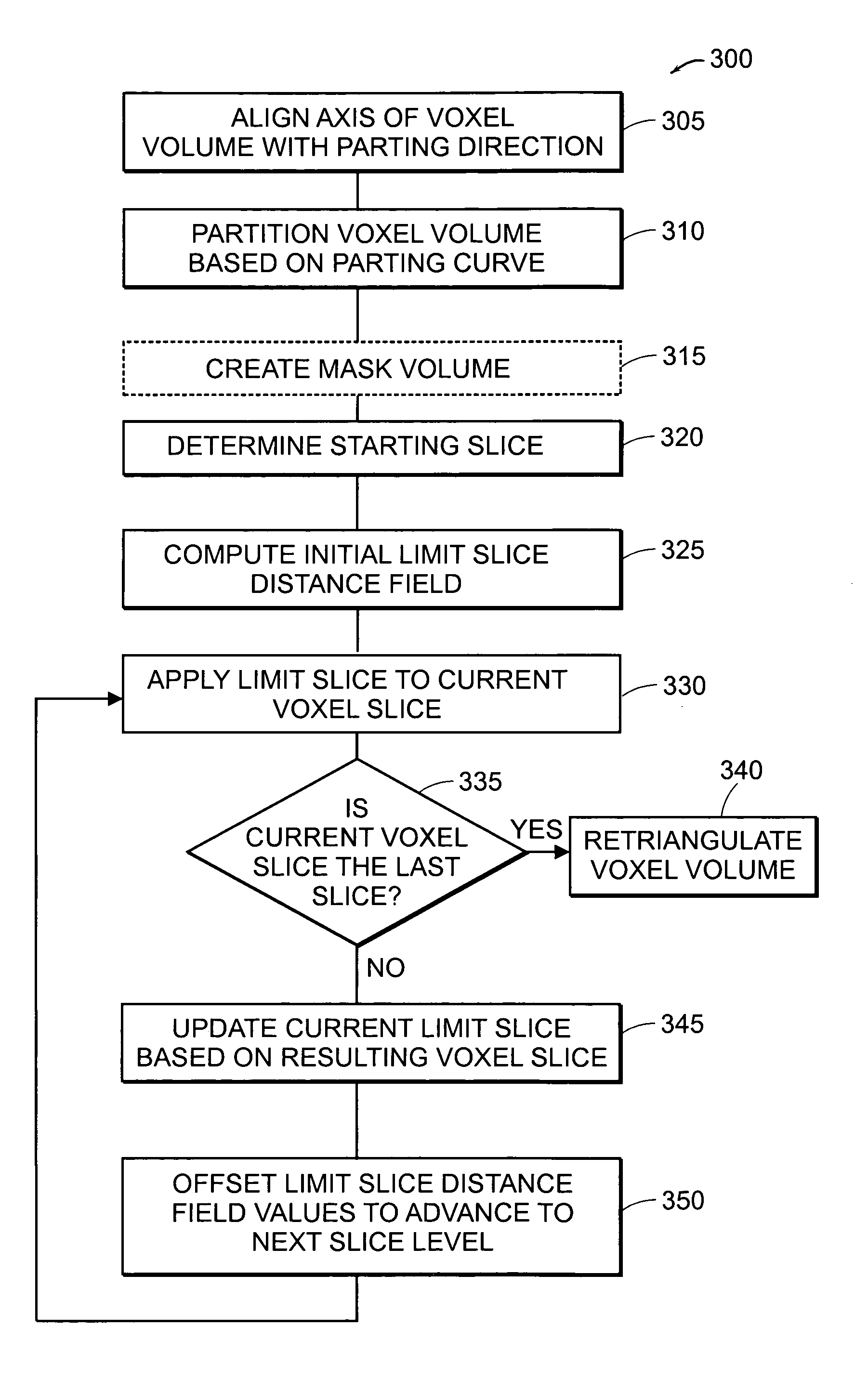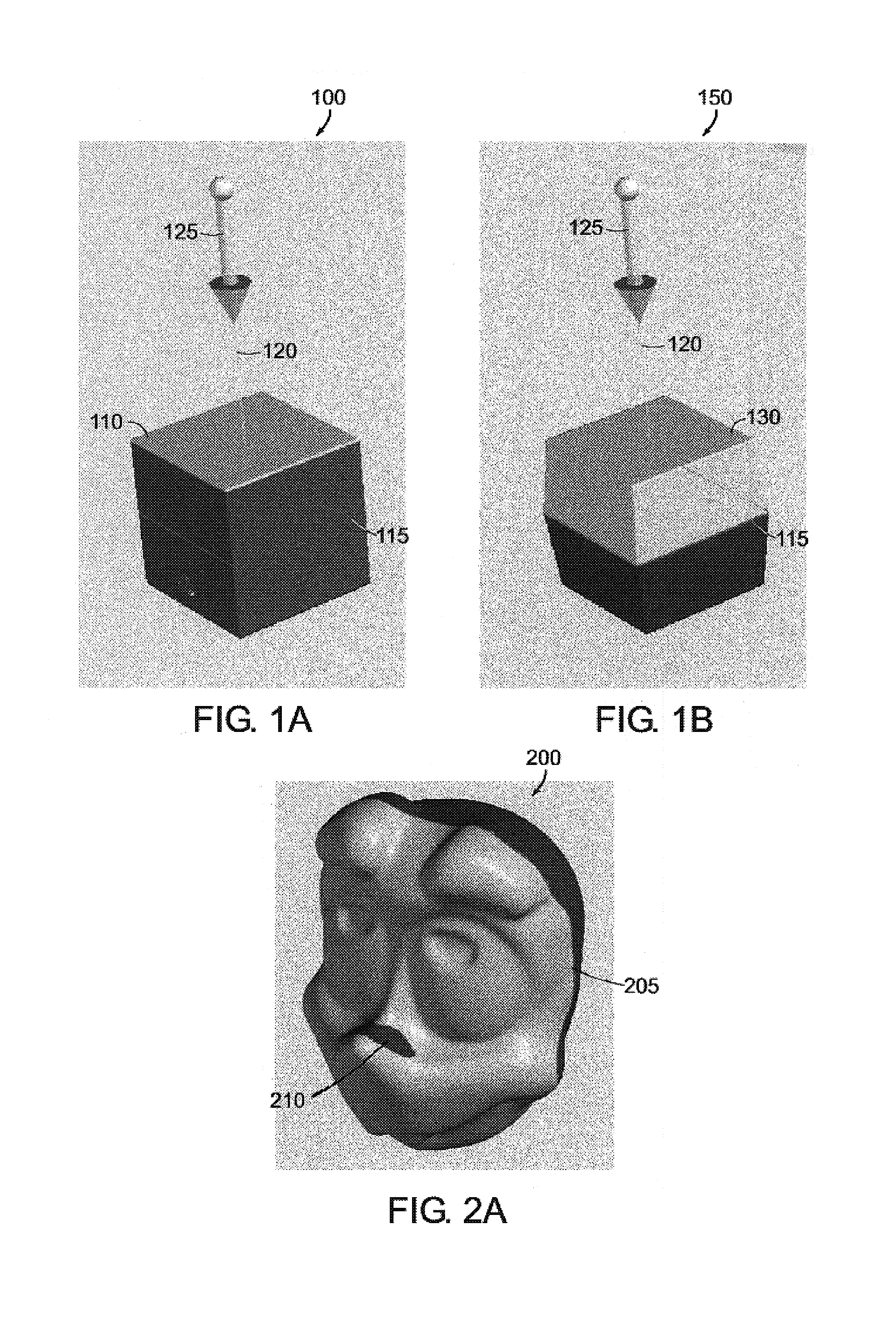Apparatus and methods for modifying a model of an object to enforce compliance with a manufacturing constraint
a technology of modifying a model and an object, applied in the field of computer-aided design of manufactured objects, can solve the problems of difficult to change the model of an object, improperly designed objects may get stuck in the mold, and insufficient extraction, so as to enhance the interactivity of the design process and facilitate processing
- Summary
- Abstract
- Description
- Claims
- Application Information
AI Technical Summary
Benefits of technology
Problems solved by technology
Method used
Image
Examples
Embodiment Construction
[0065]Throughout the description, where an apparatus is described as having, including, or comprising specific components, or where systems, processes, and methods are described as having, including, or comprising specific steps, it is contemplated that, additionally, there are apparati of the present invention that consist essentially of, or consist of, the recited components, and that there are systems, processes, and methods of the present invention that consist essentially of, or consist of, the recited steps.
[0066]It should be understood that the order of steps or order for performing certain actions is immaterial so long as the invention remains operable. Moreover, two or more steps or actions may be conducted simultaneously.
[0067]It is an object of the invention to leverage the unique properties of voxels to automatically add and / or remove virtual material from a 3D voxel-based model according to a manufacturing constraint.
[0068]An exemplary method of the invention proceeds t...
PUM
 Login to View More
Login to View More Abstract
Description
Claims
Application Information
 Login to View More
Login to View More - R&D
- Intellectual Property
- Life Sciences
- Materials
- Tech Scout
- Unparalleled Data Quality
- Higher Quality Content
- 60% Fewer Hallucinations
Browse by: Latest US Patents, China's latest patents, Technical Efficacy Thesaurus, Application Domain, Technology Topic, Popular Technical Reports.
© 2025 PatSnap. All rights reserved.Legal|Privacy policy|Modern Slavery Act Transparency Statement|Sitemap|About US| Contact US: help@patsnap.com



